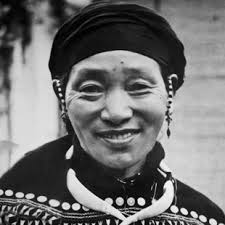
Rani
In the annals of India’s freedom struggle, several heroes have been forgotten or overlooked, their contributions relegated to the dusty pages of history. One such unsung hero is Rani Gaidinliu, a Naga political leader and activist who fought tirelessly for the rights and freedom of the Naga people. Despite her remarkable achievements, Gaidinliu remains a relatively unknown figure in mainstream Indian history. There are several reasons why Rani Gaidinliu is forgotten or overlooked in mainstream Indian history:
1. Colonial era records: During the British colonial era, records of anti-colonial movements and leaders were often suppressed or destroyed. This has contributed to the erasure of Gaidinliu’s contributions from historical records.
2. Patricentric narratives: Traditional historical narratives have often prioritized male leaders and perspectives, marginalizing women’s contributions. Gaidinliu’s gender and tribal identity may have contributed to her exclusion from dominant historical narratives.
3. Regional focus: Gaidinliu’s activism was primarily focused on the Naga people and the Northeastern region of India. This regional focus may have limited her recognition and celebration at the national level.
4. Post-independence politics: After India gained independence, the country’s political landscape shifted. New leaders and parties emerged, and older movements were sometimes forgotten or marginalized. Gaidinliu’s activism may have been overshadowed by newer political developments.
5. Lack of documentation: Gaidinliu’s life and work may not have been extensively documented or recorded, making it harder for historians and researchers to access and share her story.
6. Social and cultural factors: Gaidinliu belonged to a tribal community and was a woman, which may have contributed to her marginalization and exclusion from mainstream historical narratives.
7. Historical amnesia: India’s history has often been subject to revisionism and selective memory. Gaidinliu’s contributions may have been deliberately or unintentionally forgotten or downplayed over time. It is essential to acknowledge and address these factors to revive and celebrate Rani Gaidinliu’s legacy and contributions to India’s freedom struggle and social justice movements.
The impact of Rani Gaidinliu being forgotten or overlooked includes:
1. Erasure of contributions: Her significant contributions to the freedom struggle and social justice movements are lost to history.
2. Loss of inspiration: Future generations are denied a powerful role model and inspiration.
3. Marginalization of tribal communities: Gaidinliu’s legacy is a vital part of tribal history and culture. Forgetting her perpetuates the marginalization of tribal communities.
4. Inaccurate historical narratives: The omission of Gaidinliu’s story distorts our understanding of India’s past and its diverse freedom struggles.
5. Disconnection from heritage: The forgetting of Gaidinliu severs the connection between present and past generations, making it harder to learn from and build upon her achievements.
6. Social justice implications: Gaidinliu’s work on women’s rights, education, and social justice is forgotten, hindering progress in these areas.
7. Cultural amnesia: Forgetting Gaidinliu contributes to a broader cultural amnesia, where important aspects of India’s history and heritage are lost.
8. Missed opportunities: By forgetting Gaidinliu, we miss opportunities to learn from her experiences, strategies, and leadership.
9. Invisibility of women leaders: Gaidinliu’s erasure perpetuates the invisibility of women leaders and their contributions to Indian history.
10. Historical injustice: The forgetting of Gaidinliu perpetuates a historical injustice, denying her the recognition she deserves. It is essential to revive and celebrate Rani Gaidinliu’s legacy to address these impacts and ensure her contributions are remembered and honored.
These rare facts highlight Gaidinliu’s remarkable life, activism, and legacy and demonstrate her significance as a pioneering figure in Indian history. Rani Gaidinliu is often considered a forgotten leader in Indian history, despite her significant contributions to the freedom struggle and her role as a pioneering woman leader. There are several reasons why she is not as well-known as some of her contemporaries: Gaidinliu’s activism was primarily focused in the Naga Hills and Northeast India, which have historically received less attention than other regions of India.
Much of Gaidinliu’s life and work were not well documented, making it difficult for historians and researchers to reconstruct her story. Gaidinliu’s contributions were often overshadowed by those of male leaders, such as Mahatma Gandhi and Jawaharlal Nehru, who dominated the narrative of India’s freedom struggle. Despite her international recognition, Gaidinliu did not receive adequate recognition at the national level, which further contributed to her relative obscurity. However, in recent years, there has been a growing effort to rediscover and celebrate Gaidinliu’s legacy, recognizing her as a pioneering figure in India’s freedom struggle and a trailblazing female leader.
Rani Gaidinliu’s contributions to India are:
1. Naga independence movement: She led the Naga independence movement, fighting for self-rule and freedom from British colonial rule.
2. Empowering women: Gaidinliu inspired women to participate in the freedom struggle, challenging gender norms and paving the way for future generations of women leaders.
3. Preserving Naga culture: She worked tirelessly to preserve Naga culture, traditions, and identity, promoting her people’s unique heritage.
4. Unifying Nagas: Gaidinliu united various Naga tribes, fostering a sense of unity and solidarity among her people.
5. Inspiring future generations: Her courage, determination, and leadership have inspired countless young Indians, particularly in the Northeast, to stand up for their rights and fight for their people’s welfare.
6. Symbol of resistance: Gaidinliu’s life and struggle serve as a powerful symbol of resistance against colonialism, oppression, and marginalization.
7. Nationalist icon: She is celebrated as a nationalist icon, reflecting India’s diversity and the country’s struggle for freedom and self-determination.
Rani Gaidinliu’s legacy can be summarized as that of an unsung hero who fought tirelessly for her people’s freedom and rights without seeking personal glory or recognition. inspired generations with her courage, leadership, and vision, despite facing immense challenges and hardships. – Remains a hidden gem in India’s history, with her contributions and achievements waiting to be discovered and celebrated by a wider audience. – Embodies the spirit of selflessness, dedication, and perseverance, making her a true hero of India’s freedom struggle.
It demonstrates that even in the absence of widespread recognition, one’s impact and legacy can continue to inspire and make a difference in the lives of others. In essence, Rani Gardenia’s story serves as a reminder that heroism comes in many forms and that unsung heroes like her are worthy of our recognition, appreciation, and gratitude.
By: ANJANA R
Write and Win: Participate in Creative writing Contest & International Essay Contest and win fabulous prizes.


